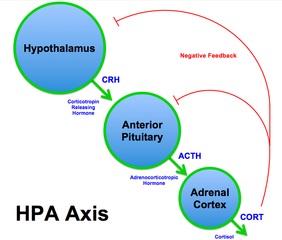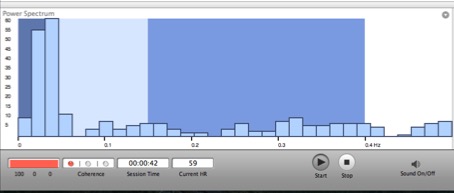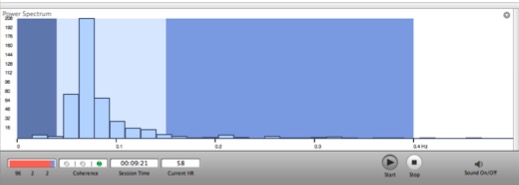Anne Ruitberg Taylor, Ph.D.
Addictive behaviors are how many people relieve stress and anxiety, but the price is high—too high. Kundalini yoga and meditation are powerful for reducing daily stressors, and helps generate personal resilience.
Inner resilience builds immunity from patterns of addiction, because you’ve learn how to feel good anytime you want to–naturally. If you’re in addiction recovery, yoga and meditation are powerful ways to relieve stress and anxiety. Yogic science teaches that stress stokes the cycle of addiction, and Western researchers are agreeing.
Researchers, including Nick E. Goeders at the LSU Health Sciences Center, confirm what yogic science teaches: stress stimulates centers in the brain that encourage the excessive use of potentially addictive substances. In Goeders’ research article, “The impact of stress on addiction,” he concluded:
“exposure to stress increases the vulnerability for addiction”
Makes sense, stress triggers the urge to self-sooth through the use of alcohol, drugs, TV, internet, food, sex, cigarettes, etcetera. On the surface, a glass of wine or relaxing in front of the internet may seem all fine and good; however, for how many of us has this led us down a path that was never intended?
We are all on the same addiction spectrum, it’s just a matter of to what degree. If it’s not a substance you’re addicted to it may be an unconscious tendency for the need for approval, advancement, and other ego gratifications.
Clinical literature indicates that there is a correlation between substance abuse and stress. So while some of us may stick to healthy amounts of food or whatever our pleasure might be, many people are simply more prone addictive behaviors when under stress.
For people genetically or environmentally more susceptible to addictive behaviors, stress, anxiety, and stress-induced depression act as catalysts. Once the cycle of addiction kicks off it is difficult to stop. Yogic science teaches that once emotion has colored the mind powerful hormones get released making desire and subsequent action nearly inevitable. Through Self-mastery techniques taught by yoga and meditation, you are able to recognize and take action before the thoughts get to the point of no return.
Chronic stress is harmful for everyone, however the person who is prone to addiction will likely be more susceptible to indulging when under stress. Rajita Sinha reported that his research article: “Chronic Stress, Drug Use, and Vulnerability to Addiction” that “Stress is a well-known risk factor in the development of addiction and in addiction relapse vulnerability.”
Stress triggers the “fight or flight” response and activates of the sympathetic

portion of our autonomic nervous system (think being chased by tiger). Your body is ready to take immediate action!
Substances or activities, such as a cigarette or over eating, sooth our nervous system, and we relax–at least for a while. The parasympathetic “rest and digest” (think Buddha) branch of the ANS responds and our mind and body calms down. The calming effects of addictive substances are temporary and unhealthy; whether it’s another brownie or round of black jack.
Yogis have long understood the power of yoga and meditation to heal addictions, yes, heal. According to yogic science, addiction causes problems in the area of the pineal gland, which in turn causes problems in the regulation of the pituitary gland. The effects cascade into the mind going out of balance. The mind can be trained to go down a different pathway, into a peaceful state of bliss through yogic techniques.
Researchers including Judson A. Brewer, et al. are exploring this new terrain. They conducted a pilot study, which provided evidence of the feasibility of mindfulness (MT) training in treating stress reactivity in substance abuse [SUDs] and suggests that MT may be efficacious in targeting stress. The results were published in: “Mindfulness Training and Stress Reactivity in Substance Abuse: Results from A Randomized, Controlled Stage I Pilot Study.” Substance abuse: official publication of the Association for Medical Education and Research in Substance Abuse 30.4 (2009): 306–317. PMC. Web. 24 Jan. 2017.
Kundalini Yoga Master, Yogi Bhajan, predicted that meditation will be used in the future to alleviate all kinds of mental and physical afflictions, and he also anticipated it may take 500 years before science provides the evidence. Researchers call for continued investigations into how stress and the subsequent activation of the HPA axis (hypothalamic–pituitary–adrenal) impact addiction (Goeders, 439).

Try the Meditation for Healing Addictions for yourself and record your own results. Please remember that for meaningful results practice at least 11 minutes a day for 40 days. Better yet, find a meditation and do it every day. Further the conclusion this post I share my results while practicing this meditation. As a daily meditator, my results may differ from yours. Allow the yoga to meet you where you’re at, as I like to remind my yoga students in class. It’s about you and You.

Addiction recovery specialist and KRI certified Kundalini yoga teacher, Tommy Rosen, wrote that:
“I certainly have not given up getting high. I’ve had a massive overhaul in my methods of doing so” (Recovery 2.0, p 190).
Rosen is talking about the power of Kundalini yoga and meditation to break the “frequency” of addiction and bring the practitioner to new natural higher highs. Addiction healing begins for many people when they realize that there is something even better out there, the higher vibration feels better and can be called upon anytime of the day or night.
Addicted people are frequently sensitive souls who often have suffered stressful events from childhood, and have at some point become dissociated from their authentic selves. In other words, they have to protect themselves psychically and maybe even physically. This goes beyond abuse in the home, it can be subtler; the vulnerability of latch key kids, non-violent alcoholism (parent is unavailable) in the home, and neglect (nothing special about you feeling)—not so subtle really, is it?
Kids growing up like this have to behave in ways to protect themselves. I know I did, I became extremely shy growing up in a home where fighting and alcohol abuse was the norm. You detach from your core essence and act in ways that may have served you then—but not now.
The addictive substance of choice is a poor substitute for the potential high that you can achieve through meditation (including mindfulness practices) and yoga. Addiction short circuits the process of reaching the higher Self by substituting a chemical/alcoholic/fill in the blank high for the real thing—getting in touch with your higher frequency Self. There is no evolution of the person soul who’s in the grip of addiction—just a repeating loop back to nowhere.
Yogic meditation provides alternative pathways to recovery that hold promise of a greater high, one that is can be sustained and cultivated through your lifetime. Surbhi Khanna, MBBS of Kasturba Medical College concluded that “Overall, current findings increasingly support yoga and mindfulness as promising complementary therapies for treating and preventing addictive behaviors.” Meditation and yoga reduces stress, but it also feels good.
Yoga and meditation adjusts the sympathetic nervous system thus reducing stress, and calms the mind-body, whether you’re highly addicted to something or not. Yogic breathing (pranayama), and select meditations, increase parasympathetic tone, while decreasing sympathetic activity, and thus stress is reduced in the mind and body.
Syncing Evidence-Based Science with Eastern technologies
The alterations in your autonomic nervous system (ANS) can be readily demonstrated using heart rate variability feedback while meditating. I used the Institute of HeartMath Desktop Pro for all recordings found below.
HRV is a dynamic window into the ANS, it is really cool. You can literally see when the sympathetic (tiger) is running the show and when the parasympathetic has taken over. The key is in the balance of the two, this is referred to as heart coherence.
High heart coherence means you’re in the zone of healing the nervous and glandular systems. Not only that, but you can reach a new “bliss point.” Check out the anatomy of an HRV graph for more details.
HRV training will also help you determine which meditation is most effective for you. We do not all respond the same way, and I highly recommend trying several 11-Minute Meds to find out which one are most effective for you. Remember, allow the yoga to meet you where you are.
Heart Rate Variability Session during Meditation for Healing Addictions
Recorded image at 42 seconds into the Meditation for Healing Addictions

Recorded image at 1 minute 4 seconds


Yoga and meditations are tools in the toolbox, and are to be used in conjunction with the advice of your healthcare provider.

